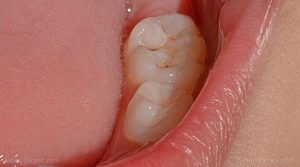
Enterococcus infection – causes, side effects and treatments at NaturalPedia.com
Thursday, March 15, 2018 by Jhoanna Robinson
http://www.naturalpedia.com/enterococcus-infection-causes-side-effects-and-treatments-at-naturalpedia-com.html

Enterococci belong to the usual intestinal makeup of humans and animals. It can be found in the vaginal tract, the bowel, the gut, and the mouth.
The genus Enterococcus includes over 17 species; however, very seldomly do members of the said species cause harm to humans. In healthy people, normal amounts of Enterococcus usually are fine, and would not cause detrimental effects to a person. However, staggering amounts of the bacteria in an unhealthy person, one in a hospital setting perhaps, can put that person at risk of getting an infection.
Enterococcus species are anaerobic organisms that can thrive in areas that have temperatures of 60 degrees Celsius for short periods of time, and it can survive in both acidic and alkaline environments. In the laboratory, enterococci are identified outward appearance on Gram stain and culture (gram-positive cocci growing in chains) and their capability to hydrolyze esculin in the presence of bile; metastasize in 6.5 percent sodium chloride; hydrolyze pyrrolidonyl arylamidase and leucine aminopeptidase; and react with group D antiserum.
Before Enterococcus was given its own genus, it belonged to the group D streptococci. One type of Enterococcus is the Enterococcus faecalis, which is responsible for around 80 percent of all human infections, according to the United States Centers for Disease Control and Prevention.
People who are more likely to suffer from an infection because of the bacteria are those who are undergoing cancer treatment, are receiving an organ transplant, have weak immunity due to disease or surgery, are on dialysis, have HIV or AIDS, and those who have had a root canal.

Known side effects of Enterococcus infection
Some of the diseases that can be caused by include bacteremia or the presence of bacteria in the blood, catheter-related infections, endocarditis or the inflammation of the heart’s lining, intra-abdominal and pelvic infections, urinary tract infection, wound infections, emphysema or the gathering of pus between the lungs and the inner surface of the chest wall, meningitis or the inflammation of the membranes around your brain and spinal cord, soft-tissue infections, and prostatitis or the inflammation of the prostate gland.
People who experience fatigue, painful urination, stomach cramping, and those who vomit a lot should immediately consult with a doctor to rule out the possibility of an Enterococcus infection.
Body systems harmed by Enterococcus infection
Enterococcus infections are bad for almost every body system as they can damage the circulatory, reproductive, excretory, integumentary, respiratory, and nervous systems.
Food items or nutrients that may prevent Enterococcus infection
Garlic is touted to work as well as penicillin when it comes to getting rid of Enterococcus infections. It contains active constituents as ajoene, allyl propyl disulfide, dirpopyl disulphide, methyl ajoene, methyl allyl thiosulfinate, propylene sulfide, 2-vinyl-4H-1, 3-vinyl-4H-1, 2dithiin, S-allyl cycteine sulfoxide, S-allyl mercaoti, and cysteine.
Treatment, mangement plans for Enterococcus infection
Enterococcus recently developed some resistance to antibiotics, such as beta-lactam antibiotics as they contain penicillin-binding proteins. It is also resistant to nalidixic acid, aztreonam, macrolides, penicillinase-susceptible, penicillinase-resistant penicillins, cephalosporins, and low levels of clindamycin and aminoglycosides.
Enterococcus has also gained resistance to vancomycin, chloramphenicol, rifampin, tetracycline, fluoroquinolones, and penicillin by beta-lactamases.
However, there are still antibiotics that can be used to treat Enterococcus infections such as fosfomycin and nitrofurantoin.
Where to learn more
- Thyme oil is proven to kill 97 percent of breast cancer cells!
- Half of all hospital rooms contaminated with deadly superbugs
- Clinics and Doctors’ Offices Spreading Antibiotic-Resistant Bacteria (Superbugs)
- One in four seniors leave the hospital carrying a superbug on their hands
- Hospitals serving up flesh-eating bacteria?
Summary
Garlic is touted to work as well as penicillin when it comes to getting rid of Enterococcus infections.
Enterococci belong to the usual intestinal makeup of humans and animals. They can be found in the vaginal tract, the bowel, the gut, and the mouth.
Enterococcus species are anaerobic organisms that can thrive in areas that have temperatures of 60 degrees Celsius for short periods of time, and it can survive in both acidic and alkaline environments.
Sources include:
Tagged Under: Tags: Enterococcus infection





